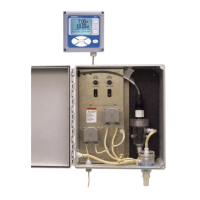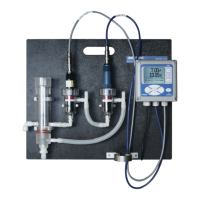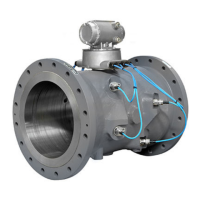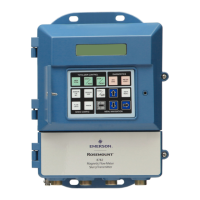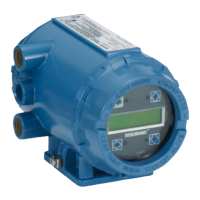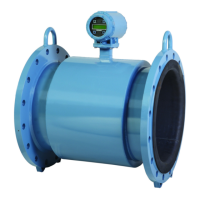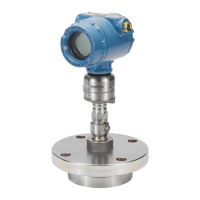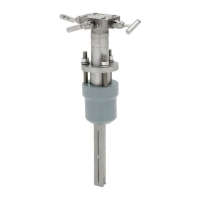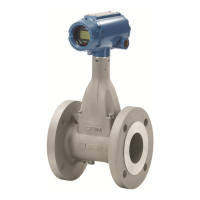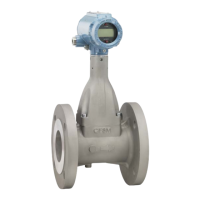Rosemount Model 1195/ProPlate/Mass ProPlate
5-16
Calibration Overview
Complete calibration of the ProPlate flowmeter involves the following
tasks:
Configure the Analog Output Parameters
• Set Process Variable Units (page 5-7)
• Set Output Type (page 5-9)
• Rerange (page 5-9)
• Set Damping (page 5-12)
Calibrate the Sensor
• Full Trim (page 5-18)
• Zero Trim (page 5-19)
Calibrate the 4–20 mA Output
• 4–20 mA Output Trim (page 5-20) or
• 4–20 mA Output Trim Using Other Scale (page 5-20)
Figure 5-6 illustrates the ProPlate flowmeter data flow. This data flow
can be summarized in four major steps:
1. A change in pressure is measured by a change in the sensor output
(Sensor Signal).
2. The sensor signal is converted to a digital format that can be
understood by the microprocessor (Analog-to-Digital Signal
Conversion).
3. Corrections are performed in the microprocessor to obtain a digital
representation of the process input (Digital PV).
4. The Digital PV is converted to an analog value
(Digital-to-Analog Signal Conversion).
Figure 5-6 also identifies the approximate flowmeter location for each
calibration task. Note that the data flows from left to right, and a
parameter change affects all values to the right of the changed
parameter.
Not all calibration procedures should be performed for each ProPlate
flowmeter. In addition, some procedures are appropriate for bench
calibration, but should not be performed during field calibration.
Figure 5-6 identifies the recommended calibration procedures for each
type of ProPlate flowmeter for both bench and field calibration.
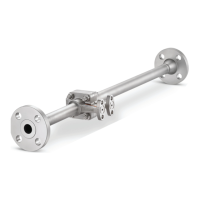
